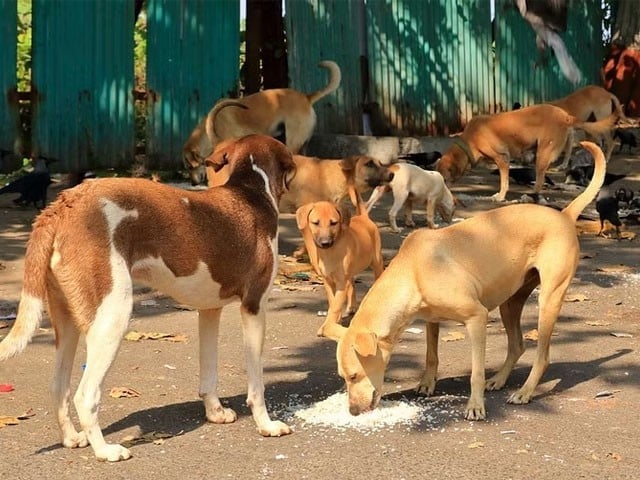
Hyderabad’s pedestrians left to dogs; officials look the other way
”
HYDERABAD:
The streets of Hyderabad have turned into a perilous battleground for pedestrians as the city struggles with an unchecked surge in stray dogs. Over the past month and a half alone, 1,571 citizens have been victims of dog bites, yet the authorities remain indifferent, abandoning both the people and the unregulated stray dog population to their fate.
Municipal authorities seem to have washed their hands of the crisis, leaving helpless pedestrians, especially women and children, to fend for themselves against aggressive packs of stray dogs. Despite repeated complaints, no systematic action has been taken to curb the growing number of attacks. In just the first month and a half of this year, Hyderabad’s Civil Hospital has recorded over 1,500 cases of dog bites. The numbers from other hospitals remain unknown, as the health department has failed to compile any comprehensive data.
Instead of addressing the crisis, municipal officials and staff-many appointed through political connections and bribery-have neglected their responsibilities, allowing the problem to escalate. Hyderabad Municipal Corporation (HMC) and town-level authorities provide no clear mechanism for residents to report stray dog attacks. Once confined to nighttime and early morning, stray dogs are now roaming the streets in broad daylight, moving in packs across densely populated neighborhoods. Heaps of garbage and cemeteries have become their primary shelters, and their sudden attacks on motorcyclists often result in accidents and injuries.
Despite the rise in incidents, there is no concrete government initiative to control the population of stray dogs or provide adequate treatment to victims. In previous years, local municipal health departments routinely culled stray dogs using poison, particularly in Latifabad and Qasimabad. However, after the formation of HMC and its town administrations, the responsibility shifted to municipal health officers, who have since failed to implement any control measures. Public outrage and frustration continue to grow as officials remain indifferent.
In the past, affected citizens attempted to hold the authorities accountable. Following a directive from the Sindh High Court, parents of injured children even filed cases against municipal commissioners and union council secretaries. However, due to delays in justice and lack of enforcement, many residents have stopped seeking legal action, resigning themselves to the authorities’ negligence.
The gravity of the crisis is evident in last year’s statistics: 7,598 reported dog bite cases in Hyderabad alone. Ironically, the provincial government once launched a massive Rs. 900 million project in November 2019, titled “Fight Against Rabies and Population Control of Street Dogs,” aimed at humane sterilization and vaccination. Yet, to this day, neither Hyderabad nor other Sindh districts have benefited from it. The program’s current status and expenditure remain a mystery.
Even more shocking is the silence from major political and religious parties-including MQM, PTI, and Jamaat-e-Islami-who, despite frequently raising concerns over other public issues, have chosen to ignore this pressing problem. As Hyderabad’s residents continue to live in fear, both from aggressive dogs and government indifference, the question remains: how many more victims will it take before authorities act?
”




